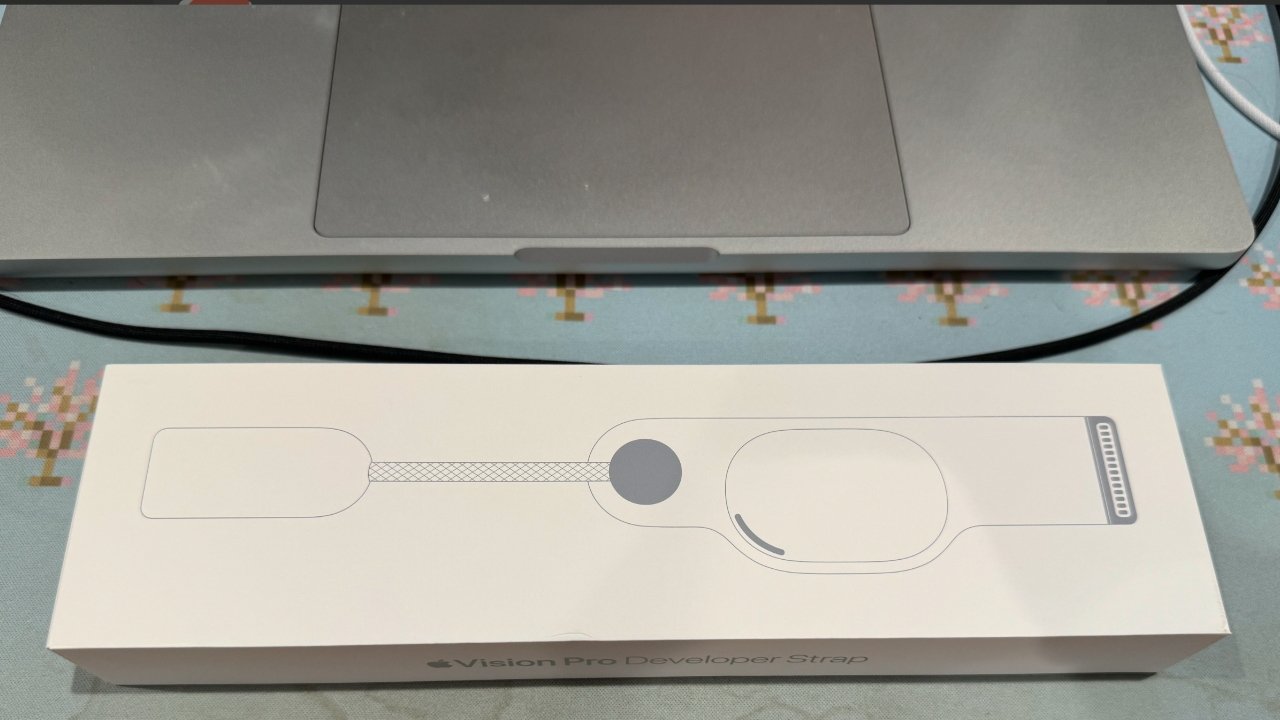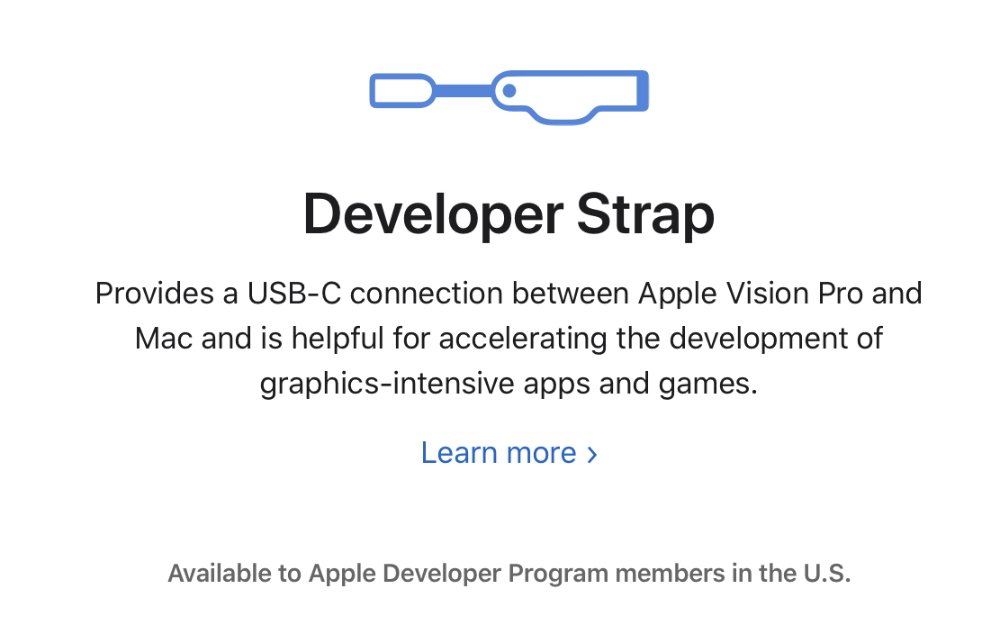Apple is selling developers a $300 USB-C dongle to connect the Apple Vision Pro to a Mac, but in this incarnation, it turns out to be no faster than Wi-Fi.
The Developer Strap completely replaces the right-hand side audio assembly on the Apple Vision Pro and lets users then connect the headset to a Mac using a USB-C cable. Apple says that the strap provides "a USB-C connection between Apple Vision Pro and Mac and is helpful for accelerating the development of graphics-intensive apps and games."
But now developers are using them in the real world and finding that, overall, it's not worth the money, nor very performant.
Developer Dimitri Bouniol was perhaps the first to suspect something when he used the cable to connect his Apple Vision Pro to his Mac. He checked its details in the System Information report.
"[Apple Vision Pro] shows up as a "Composite Device" in System Profiler, and is unfortunately limited to USB 2 speeds," wrote Bouniol on Mastodon.
We had some questions, so we reached out further. Bouniol then told AppleInsider that he used Apple's own 0.5m Thunderbolt 3 cable to test the real-world speed, which is capable of 10 gigabits per second between a USB 3.2 host and connected device.
He then experimented with a plain USB-C cable shipped with [a] SanDisk SSD capable of 10 gigabits per second. This too delivered USB2 speeds, with him saying that it "gives the same report in System Profiler."
"Putting a 3 GB file in my Xcode project and building that took ~27 seconds to install on device," says Bouniol. "Doing the same with WiFi only took the same amount of time."
The Developer Strap is effectively a dongle that lets developers connect the Apple Vision Pro to a Mac through USB. In every USB chain, max speed is limited to the slowest speed provided by the host, the connected device, the dongle, or the cable. In this case, the choke point is clearly the dongle.
Bouniol says he wondered whether this meant that a connection would default to Wi-Fi if that turns out to be faster for installation. However, he tried accounting for that by switching off Wi-Fi entirely.
"Ok, tried with WiFi off," he wrote, "and it took ~107s to transfer a 4GB file, giving us ~300 Mbps, which is about exactly what I would expect over USB 2's 480 Mbps theoretical max, so definitely going at USB2 speeds."
Apple doesn't promise specific speeds, nor say much at all about the cable beyond the developer strap "accelerating" development. At USB2 speeds, though, it's a very slow direct connection versus modern connectivity provided by USB 3.2 or Thunderbolt, so it's not clear how this is an acceleration.
It's also not clear if a future patch will do anything for speeds. The connection between the developer strap and the headset has more pins than a USB-C cable or a Thunderbolt cable does, so in theory, this could be capable of a very fast connection assuming the electronics behind the connector are robust enough.
Since our conversation with Bouniol, we've spoken to other developers that we've known for years about the strap. They are similarly non-plussed by the offering.
"It would be great if it could use alt-mode for direct video streaming from the Mac, but it can't even do that," one developer told AppleInsider on the condition of anonymity. "This is $300 burned to ash."
 William Gallagher and Mike Wuerthele
William Gallagher and Mike Wuerthele








-m.jpg)






 Christine McKee
Christine McKee
 Marko Zivkovic
Marko Zivkovic
 Mike Wuerthele
Mike Wuerthele

 Amber Neely
Amber Neely
 Sponsored Content
Sponsored Content
 Wesley Hilliard
Wesley Hilliard









17 Comments
Amazing. We've gone from the hidden port on the early Apple Watch that had such potential to having to buy a $300 USB2 dongle that adds no useful functionality whatsoever. Who at Apple is greenlighting these products? Have they somehow never heard of goodwill? This product is creating badwill with developers, who are possibly the single most important group of people outside Apple employees to turning the AVP into a success.
So useful only if you need to load on low level firmware or if you are still an in-office developer on a wi-fi network that doesn’t allow devices to see each other which is common on enterprise networks. I’m pretty sure developers that work in an office only exist in Cupertino.
My money is on the software was too wonky to get the port to deliver a faster speed without turning the data into garbage and they couldn’t fix it before launch.
Any chance this allows for connecting other USB accessories (like Apple dongles or a USB key?)
Has any developer tried that out?